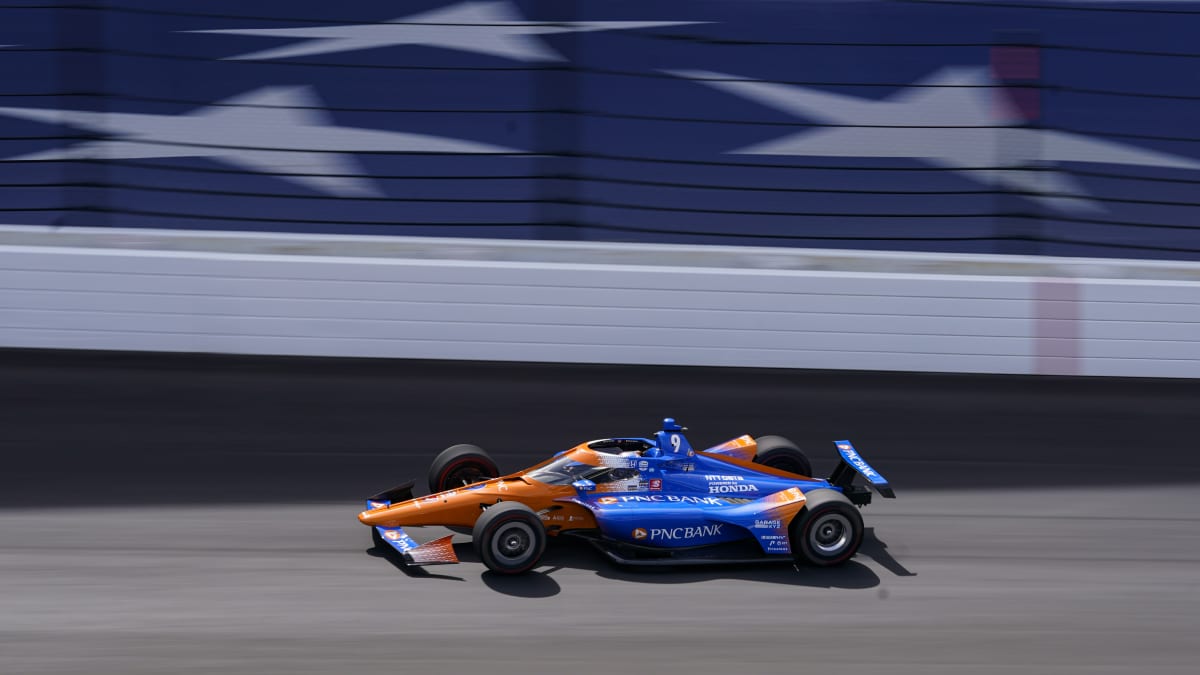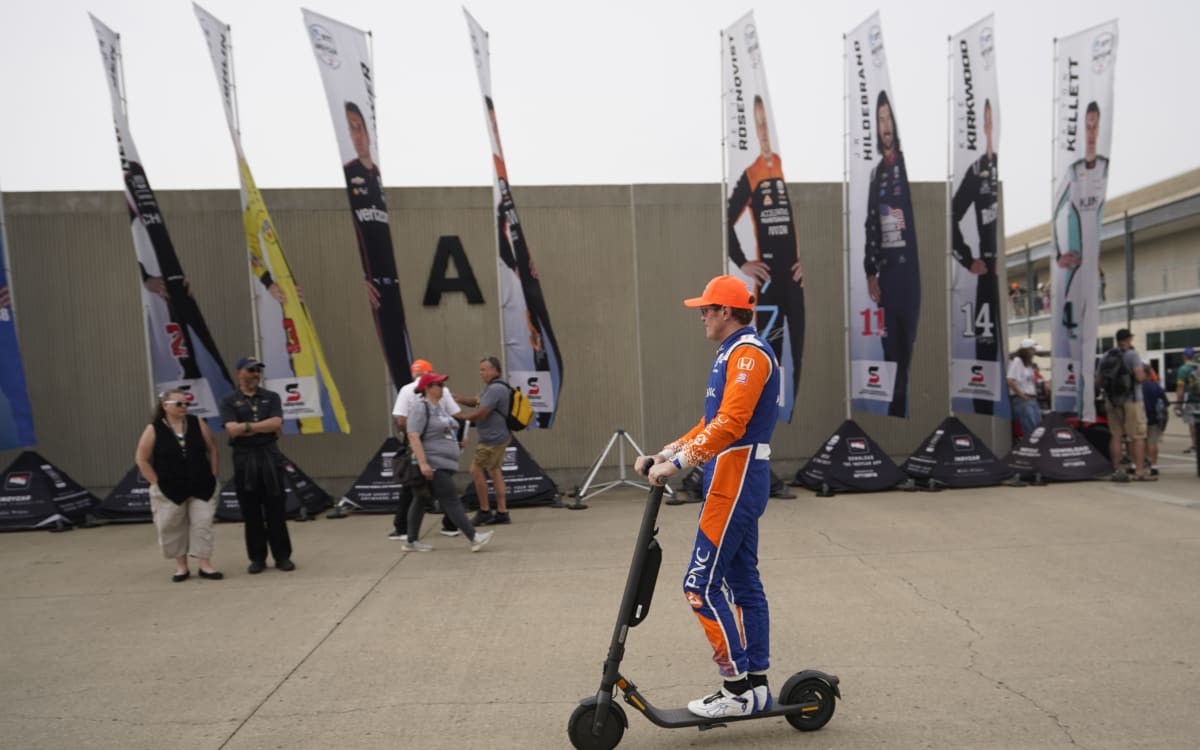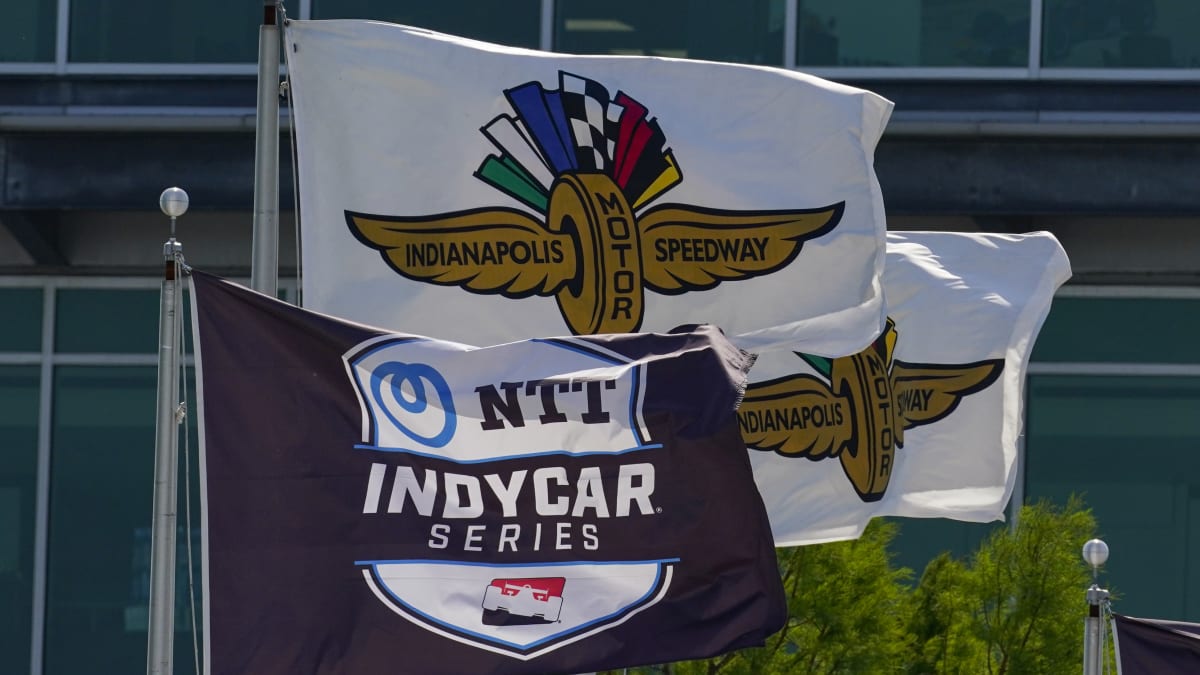Will the Indy 500 be electric sometime, producing Gasoline Alley an anachronistic phrase like Carb Working day? (Associated Push)
INDIANAPOLIS — There is nothing like the audio of an Indy vehicle rushing down the famed most important straight at the Indianapolis Motor Speedway, its motor echoing off the massive grandstands in a way that is not read any place else.
There’s a crescendo as the motor vehicle strategies from the length of Transform 4, then a burst of peak volume as it passes at virtually 230 mph, and last but not least a fade into the length of Change 1. Any individual who activities it in human being probably by no means forgets it.
It’s been an component of the speedway considering that Ray Harroun drove the 6-cylinder Marmon Wasp to victory in the to start with Indianapolis 500 in 1911. Cars and trucks have progressed and speeds have tripled in the 111 several years since, but the regular has been the sweet seem of these inner combustion engines.
But with electric-driven autos pushing the automobile industry towards a zero-emissions existence, will those loud-and-lovely echoes of Indy finally drop silent? Is it achievable, or even inescapable, that the Indianapolis 500 will be an all-electric race?
“It’s among the the most interesting queries in motorsport,” stated veteran IndyCar driver J.R. Hildebrand. “Where do we see this heading?”
J.R. Hildebrand (Getty Pictures)
Hybrids on the horizon
Lots of inside the IndyCar paddock feel comprehensive electrification of the sequence is coming. No one can predict when, although engineering is advancing rapidly. This thirty day period at the speedway, there are examples of the speedway and the NTT IndyCar Collection emphasizing initiatives to lower their carbon footprint.
IndyCar will introduce new 2.4-liter twin-turbo hybrid-assisted Honda and Chevrolet engines in 2024 creating 900 horsepower, 100 from the hybrid aspect. Transporters that have Indy cars and gear from race to race are fueled by biodiesel. Electrical cars have been much more prevalent close to the speedway this month, from two-wheeled scooters many motorists use to get close to to an electrical-powered cellular merchandise truck.
“In your mind, you are heading to feel,
‘A car or truck heading that rapidly shouldn’t sound like that.’ But it will.”
Firestone, the sole tire supplier to the sequence, sent all race tires employed at IMS this month via Freightliner eCascadia vehicles. Firestone also has produced an eco-helpful alternate tire, constructed with purely natural rubber from the guayule shrub, that will be utilised on race cars and trucks in the pit-quit contest Friday. The to start with race on that tire is scheduled for August at Nashville.
That’s a very long way from comprehensive electrification of race vehicles, but IndyCar and sports activities automobile group proprietor Mike Shank, whose Meyer Shank Racing motor vehicle driven by Helio Castroneves gained the Indy 500 very last calendar year, is preparing for it.
“The way our environment is going, it seems to be like it’s headed that way,” he stated. “When we talk about electrification, surely the hybrid is lower-hanging fruit. It is not just hybrids, but pure electric powered cars. What we’re attempting to do as a group is get ready for that.”
Everybody on Shank’s IndyCar and sporting activities automobile groups is taking component in a Honda Functionality Enhancement instruction system to find out how to properly function on electric powered automobiles.
“Used to be you could choose your niece and nephew and shove them in the car for a image, but (with electric race cars) you can’t do that any more,” Shank mentioned. “The car’s obtained to be clear, not powered on, and secure to contact. We worry about protection initial, and then how to optimize it later on. Technologies is going quick and it is such an essential hot button for all the OEMs, we all know sort of wherever it is headed.”
‘Sound is a generational thing’
But how? When? And at what value to the purists who equate velocity with sounds and won’t quickly acknowledge the relative silence of an electric Indy car or truck?
“Sound is a generational thing,” said Mike Hull, handling director of 14-time IndyCar Collection champion and 4-time Indy 500-winning workforce Chip Ganassi Racing. “But the technology that is going to set the foreseeable future for the generations that comply with (will) have developed up remaining accustomed to a various audio than we have.”
Hull envisions a particular person standing close to Change 1 at Indy while an electric race car passes quietly at 230 mph.
“In your thoughts, you’re likely to think, ‘A vehicle likely that rapidly shouldn’t seem like that,’” he mentioned. “But it will.”
“I want to stay latest, and I want to do what is crucial to the entire world.”
“Fast and loud” has been the mantra of IndyCar Collection president Jay Frye, notably in enhancement of the new engines in 2024, so it looks crystal clear inside combustion will be around awhile. Hull uncertainties it’ll be without end, saying auto manufacturers and even governments are defining a future that consists of racing.
“The earth governments, whatever nation you are in, they’re building road cars right now if you definitely assume about it,” Hull stated. “It appears backward to me, but the truth is they are telling the vehicle corporations based on the rules and polices remaining put in area about the world as to what cars need to do for the foreseeable future. So indeed, we will be racing a model of that, there’s no question.”
Shank states the outdated-university aspect of him hopes a specialized niche sector will keep on being for gas-run models.
“But on the other hand, I don’t want to be driving both,” he said. “I want to keep current, and I want to do what’s critical to the entire world.”
Scott Dixon zips by Gasoline Alley on an electric powered scooter. (AP)
Not an EV kind of race
Hildebrand, who will race in his 12th Indy 500 on Sunday, states the nature of the race is not conducive to electric powered autos in the present-day form of the engineering. The 500 is a max-velocity, accelerator-to-the-ground celebration from begin to complete, with deceleration and braking developing when drivers pit a 50 percent-dozen times for fuel and tires. It’s not practically plenty of to regenerate a battery, he said.
“To be in a position to ordinary 180 miles for every hour for 500 miles, we’re a lengthy way from the technological innovation present to be ready to do that,” stated Hildebrand, who has been an adjunct lecturer in the vehicular dynamics application at Stanford and is included with STEM courses when he’s not racing. “Looking at top-tier motorsports, possessing an electric vehicle compete with an interior combustion engine, the Indy 500 is among the the hardest ones to do that.”
“It’s my impression that the Indianapolis 500 is the position … where in the past these types of items were authorized to be explored.”
Still, Hildebrand would like to see an individual produce an electric powered race automobile and establish it can operate laps at Indy as rapidly as an inside combustion engined car or truck, even if it is not prepared for a 500-mile race. In a way, it would consider Indy back again to a time when it was a proving floor for automotive technological innovation. In the latest period, IndyCar is a spec-racing collection beneath hugely constrained polices to continue to keep level of competition balanced and economical. The racing has under no circumstances been nearer, but experimentation and innovation amid teams is incredibly restricted.
“It’s my opinion that the Indianapolis 500 is the location, particularly in American motorsport and seriously globally if you seem at the historical arc of where motorsport will come from, in which in the previous these types of points had been authorized to be explored,” Hildebrand stated. “If we followed the identical trajectory in the way that laws are at the moment created throughout the sport – we compose very highly constrained, extremely restrictive procedures for a distinct variety of powertrain architecture – and we’re just waiting around for electrification to verify that it can produce 230 mph qualifying laps and an ordinary pace of 175 or 180 mph over the class of an occasion, it may just never transpire. And even if it does, a ton of other things will be electrical at that position, so it’s not going to be a super interesting detail.”
‘All ideal, carry it!’
If Hildebrand were in cost, he’d draw up a approach that presents an electrical-run car a prospect to at the very least demonstrate how it stands with the internal combustion engine crowd, irrespective of whether or not it’s all set to race 500 miles.
“I would begin these days figuring out methods to integrate practically an X-prize fashion – appear and just display me what you have bought – some variety of system exactly where electrification would be welcome right away at the speedway in the context of IndyCar racing,” he claimed. “You can envision that functioning at a qualifying degree of tempo will appear a good deal sooner than currently being capable to work at that speed around the training course of 500 miles. If you remaining it wholly extensive open to say that any person who qualifies with any of these technologies gets in the race, which is a minimal as well open. You could immediately have automobiles that qualify but have no small business competing in excess of the program of 500 miles.”
Hildebrand thinks motorsport could be a whole lot a lot more brilliant if it embraces these new systems more than the up coming 10 years.
“The position of going racing is to showcase unique ways of performing factors.”
“Because of its historical past and mainly because it is a person of the toughest spots for everything but an interior combustion engine to be any excellent, Indy is sort of like the fantastic place to say, ‘All ideal, deliver it!’ There is no danger in that,” he stated. “There’s a risk that by doing that, it results in being the put that everybody goes to see this take place. You believe about how insane it was for a turbine car or truck to present up in 1967, consider how absolutely crazy people would go if you legitimately experienced electric powered autos qualifying at the same time as internal combustion engine automobiles, and there’s this crazy prize. Imagine about the diploma of unpredictability to that relative to what we offer with now. The enormity of that circumstance can not be overstated.”
And when battery everyday living/regeneration is not an issue in a race like the Indy 500, he would love a state of affairs where an electric cars struggle to the end with an internal combustion-powered autos.
“Say we get to the close of the race and everyone is on the exact same system, producing the same gas economic climate,” he mentioned. “You could possibly close up with conditions where due to the fact of the way electrification is effective and how considerably much less energy density they are supplying up less than warning relative to an inside combustion engine sitting down out there burning (fuel), abruptly the electric autos are the ones with an advantage in the remaining stint, and you have got a runaway of electric autos.
“There’s likely to be persons who detest that. But which is form of the issue. The place of heading racing is to showcase distinctive approaches of accomplishing items and that some things are improved than some others in particular conditions. That’s why we display up to compete.”




